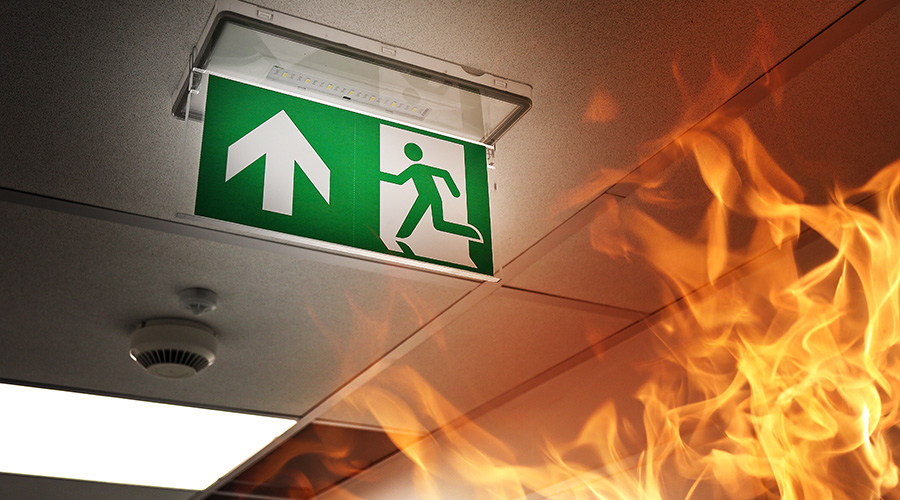Strategies for Successful Active Shooter Drills
Ensuring success requires that facility managers focus on risk assessment, rethink frequency and communicate effectively
By Dan Hounsell, Senior Editor
Threats to the nation’s institutional and commercial facilities seem to be expanding by the day, and facility managers often are at the center of organizations’ efforts to secure facilities and protect occupants, visitors and assets.
No threat to facilities has caught the attention of building owners and managers and the general public as much as active shooters. The list of facilities that have experienced an active shooter is long, and for those facilities that have not, there is a growing sense that it’s not a matter of if but when.
Among the critical measures facilities take to prepare occupants for the possibility of an active shooter are drills and training that simulate the events leading up to and during an attack. Planned and performed effectively, active shooter drills are essential tools in ensuring survival, but for facility managers involved in the process, these complex events require careful preparation to succeed.
Preparing for trouble
While most facility managers might not have formal training in security and safety, they still often find themselves deeply involved in the planning and implementing measures to protect occupants, visitors and facilities.
“Where facilities managers primarily end up being the lead is on matters related to the physical preparation of facilities,” says Craig Gundry, vice president of special projects with Critical Intervention Services. “They have to make sure that they have effective infrastructure in place in order to support the response role during a life-threatening, imminently dangerous situation and frequently also with regard to the training component. How that role is implemented within different organizations depends on the structure of the organization.”
The first step in the process often entails understanding the threats — including active shooters — to their facilities.
"Initially, you're going to want to do a risk assessment,” says Brendan King, CEO and founder of Crisis Consultant Group. “What types of incidents are more likely to occur?” King advises managers and their teams to rethink the term “active shooter” and instead use the phrase “active threat” in order to broaden the scope of the risk assessment.
"If we say, ‘What's an active threat?’ that's someone who's threatening violent behavior to a group of people that's either targeted or random,” King says. “That could be a lot of things. By framing it as only an active shooter, it pigeonholes us into training a certain way instead of opening our minds to these potential threats.”
Managers also need to carefully consider the time commitment for their organizations related to threat training and drills and the way that element plays into decisions on frequency.
“I would recommend as a minimum at least annually, and I would prefer to see more frequently than that,” Gundry says. “For instance, with schools, it typically averages anywhere as from four times per year to monthly.
“There really is no established standard for facilities or for a commercial-type facility or for workplace-type settings. But most organizations that have been very proactive in this regard, at least conduct them on an annual basis.”
Managers in complex facilities, such as healthcare and data centers, might need to consider the frequency of training more carefully.
"For organizations with complex operations, where there's a lot of opportunity for points of failure and where there's unique responsibilities that employees might have, it may warrant conducting this training or drills on a more frequent basis,” Gundry says. “A good example is a hospital. The vast majority of people that are going to be present in that facility are patients and visitors and people that require our employees to supervise their response.”
Myths and misconceptions
As managers help put together plans for training and drills related to active threats to their facilities, they are likely to run into situations that require them to rethink their opinions and approaches. Addressing these misconceptions is essential for ensuring a successful long-term strategy. One such myth is that active threat training must be a company-wide event.
"One of the biggest fallacies is that the drill requires an entire organization, all hands, every time,” King says. In many such situations, while the drill involves hundreds of people throughout a facility, the action occurs in one small area and lasts only a few minutes. Most participants are not involved.
“To address this, what we encourage are these small pocket-sized trainings,” he says. “Not only can it be very short, but we break the event down in pieces. What you have is 50 to 60 people in a manageable group seeing the scenario play out. It eliminates this whole, ‘I didn't get to see anything. I didn't get to participate.’ It also allows you to break these things down into small chunks, which can then be spread out.”
A second misconception among an organization’s leadership is that active threat training might traumatize building occupants.
"Often, there is fear or anxiety amongst the leadership as to how employees are going to respond to the training,” Gundry says. “In this regard, it's the overreaction on one end of a spectrum, which is excessive concern that employees are going to have heightened fears as a result of having this kind of training.”
In fact, Gundry says the reaction among participants often is positive.
“What's interesting is when I conduct this kind of training for groups that have not done it before, I never, ever run into those (negative) situations,” he says. “In fact, we usually encounter the opposite type of situation where employees come forward afterwards thankful that they're receiving this training and that their employees are being diligent about making sure that they know what to do in their workspace.”
Critical communication
Given the vast number of moving parts involved in planning the training and drills to respond to active threats — occupants, visitors, access control systems, schedules and regular facility operations, among them — there is a great deal of room for problems. One of the most important components to get right is communication.
King emphasizes the need for clear communication among facility managers, trainers and participants before, during and after the training event. Allowing participants to ask questions at these points helps ensure their engagement.
“A lot of folks just stay focused on the ‘during’ event,” King says. “But there's the after, which is the debriefing. There's also the importance afterward of having both the open discussion of how things went and allowing a channel for anonymous feedback.
“Having both an opportunity before the training, as well as after, to ask questions might alleviate some of the anxiety and address some of the concerns folks have before. It also allows folks to feel as though they have engagement.”
Their feedback allows managers and trainers to revisit plans for the training event.
“Does that mean we're going to change our curriculum?” he says. “Not necessarily, but it gives folks a feeling as though they're being involved. It's encouraging that buy-in because we want that maximum level of investment.
Another communication issue that can arise related to training for active threats, as well as responses to an actual threat, involves the facility’s public address system.
"This is a very big problem in a lot of facilities,” Gundry says. “We want to ensure that the systems we have for communicating emergencies are reliable under high-stress emergency conditions, that we have good audibility.
“Some organizations have attempted to compensate for deficient public address infrastructure by utilizing electronic mass-notification systems — phone-based alert systems, as it were. Any type of electronic mass-notification system that's reliant on phones or email notification or anything like this is valuable but as a redundant notification measure, not a primary notification measure.”
The communication challenges can even extend to the language used in facilities to spread the word of an attack.
"Let's say I'm a visitor to a hospital,” King says. “Hospital staff have trained for an active threat event. They have these codes, and they use the code word over the PA system. They say, ‘code yellow.’
“Let's say I'm there because you and I were visiting a friend who was in a car crash, and this code comes over the intercom. You and I have no idea what that means. Everyone else goes running out of the building because they know it's an active shooter code.”
King advises facility managers to review the language their organizations use in these situations to ensure it is as straightforward as possible — the movement to plain language, as he calls it.
Dan Hounsell is senior editor for the facilities market. He has more than 30 years of experience writing about facilities maintenance, engineering and management.
Related Topics:












